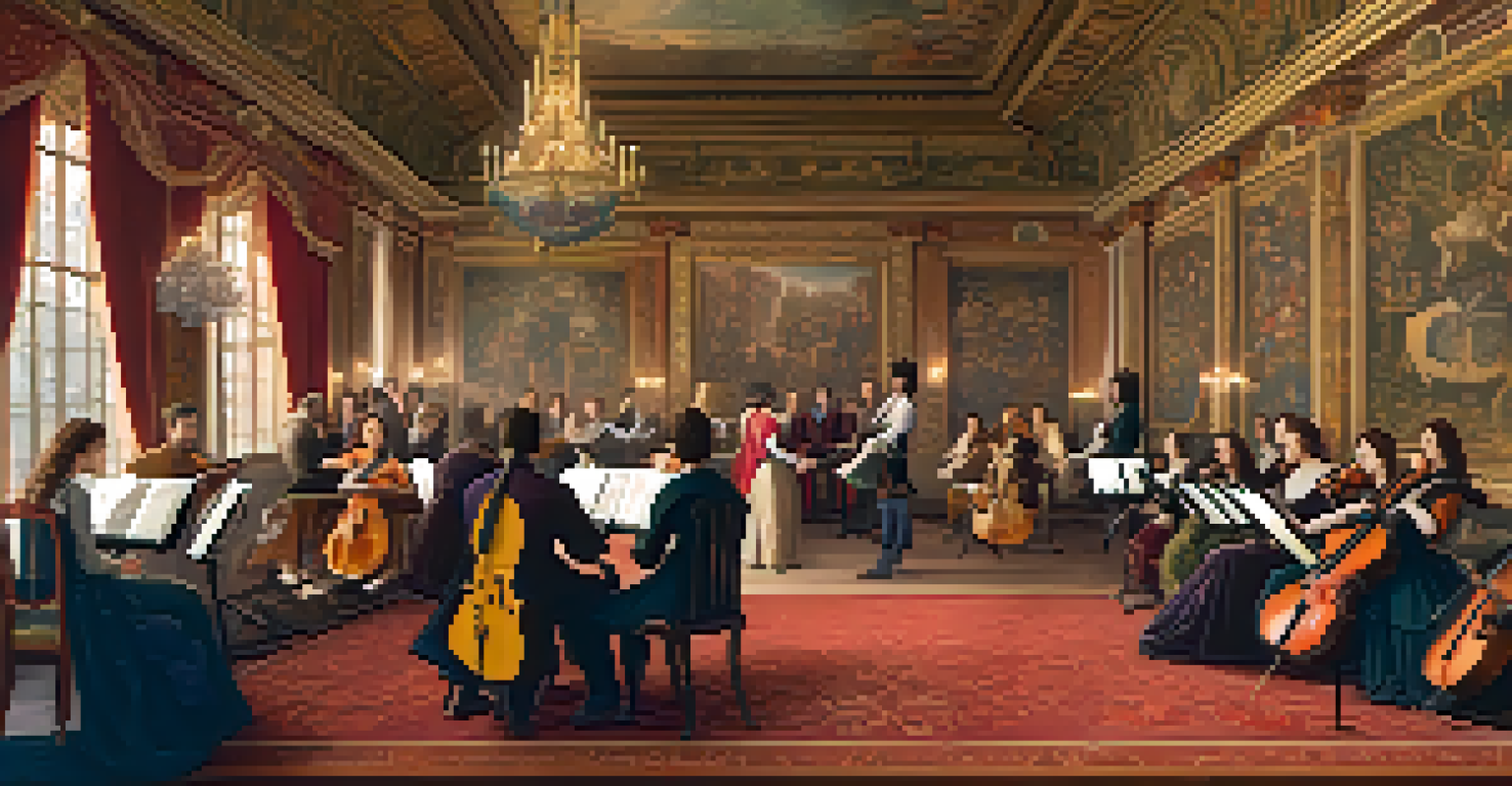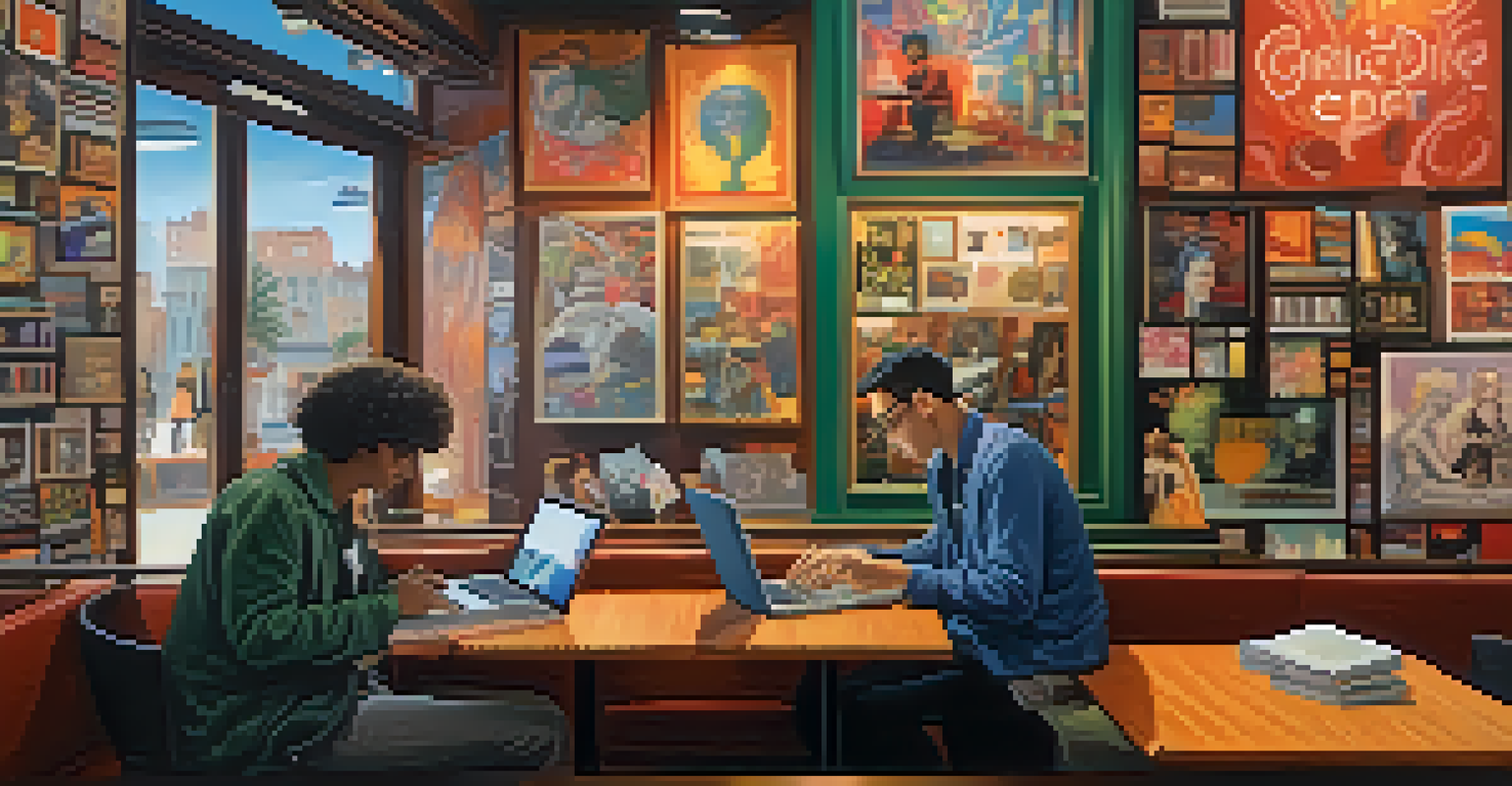The Evolution of Music Criticism: A Historical Perspective

The Origins of Music Criticism in Ancient Cultures
Music criticism finds its roots in ancient civilizations, where music was often intertwined with culture and religion. For instance, in ancient Greece, philosophers like Plato discussed the moral implications of music, suggesting that it shaped character and society. This early form of criticism was less about personal taste and more focused on the societal impact of music.
Music is the shorthand of emotion.
As music became more complex, so did the discussions surrounding it. The Greeks began to categorize music based on its purpose, whether for entertainment, worship, or education. This laid the groundwork for future critics to explore not just the sound, but the meaning and significance of music.
Overall, the ancient perspective on music criticism was holistic, blending art with ethics. This approach would evolve, but the notion that music could influence human behavior and societal norms would remain a core theme throughout history.
The Renaissance: A Turning Point in Music Appreciation
The Renaissance marked a significant shift in music criticism, as the period celebrated art and intellectualism. Critics began to analyze music more formally, focusing on composition and harmony, which reflected the era's values. This newfound appreciation for music’s structure introduced the idea that music could be critiqued for its technical merits.

During this time, notable composers like Palestrina emerged, and their works were often subject to scrutiny by contemporary critics. The rise of printed music also allowed for broader dissemination of compositions, making it easier for critics to share their thoughts with the public. This democratization of music criticism meant that more voices could participate in the discussion.
Music Criticism's Ancient Roots
Music criticism started in ancient cultures, where discussions were centered on music's societal impact rather than personal taste.
The Renaissance laid the foundation for a more formalized approach to music criticism, blending technical analysis with an appreciation for artistic expression. As critics began to explore musical works in-depth, they helped elevate the status of musicians and composers in society.
The 18th Century: Birth of the Modern Music Critic
The 18th century heralded the emergence of the modern music critic, as the public's interest in music grew alongside the rise of the middle class. Newspapers and magazines began to feature music reviews, allowing critics to reach wider audiences. This shift meant that music could be discussed not just by the elite but also by everyday people, fostering a more inclusive conversation.
The only truth is music.
Prominent figures such as Edward Holmes and Robert Schumann began to shape music criticism into a respected field, using their platforms to promote composers while also providing constructive feedback. Their reviews often blended personal opinion with broader cultural commentary, encouraging readers to engage with music on a deeper level.
This era marked a transition from mere observation to a nuanced understanding of music and its impact on society. Critics became influential in shaping public taste, helping to establish the canon of classical music that still resonates today.
The 19th Century: Romanticism and Subjective Critique
As the Romantic era unfolded in the 19th century, music criticism took on a more subjective tone. Critics began to emphasize personal experience and emotional response to music, moving away from purely technical assessments. This shift mirrored the Romantic movement's focus on individuality and personal expression, allowing critics to explore the emotional landscape of compositions.
Composers like Wagner and Chopin inspired passionate responses from critics, leading to intense debates about their artistic merits. Critics began to see themselves as advocates for certain composers, shaping public perception and influencing the direction of musical trends. This era also saw the rise of music journalism, with dedicated music sections in newspapers and magazines.
Renaissance Shift in Critique
The Renaissance marked a formalization of music criticism, emphasizing technical analysis and broader public engagement with music.
The 19th century established a rich tapestry of music criticism, where emotional resonance became as important as technical skill. This evolution not only changed how music was critiqued but also how it was created, as composers responded to the shifting landscape of audience expectations.
The 20th Century: The Rise of Diverse Critiques
The 20th century witnessed an explosion of musical genres and styles, leading to a diversification of music criticism. As jazz, rock, and pop emerged alongside classical traditions, critics had to adapt their approaches to engage with a broader spectrum of music. This period saw the rise of influential publications like Rolling Stone, which championed new voices and perspectives in music.
With the advent of technology, music criticism also became more accessible. Radio, television, and the internet allowed critics to share their insights with a global audience, breaking down geographical barriers. This democratization meant that anyone with a passion for music could contribute to the conversation, leading to a more vibrant and varied critique landscape.
The 20th century transformed music criticism into a dynamic field that embraced diversity and innovation. Critics became cultural commentators, exploring not just the music itself but its social implications and the contexts from which it emerged.
The Digital Age: Social Media and Instant Critiques
The rise of social media has revolutionized music criticism, allowing fans and critics alike to express their opinions in real-time. Platforms like Twitter, Instagram, and TikTok have created a space for instant reviews and discussions, enabling a more immediate and interactive relationship between artists and their audiences. This shift has also led to the emergence of 'citizen critics' who share their thoughts without formal training.
While this democratization of criticism has its benefits, it also raises questions about quality and depth. With so many voices contributing, it can be challenging to sift through the noise and find valuable insights. However, it has also led to more diverse perspectives, reflecting a wide array of musical tastes and cultural backgrounds.
Digital Age and Instant Feedback
Social media has transformed music criticism into an interactive platform, allowing diverse voices to contribute in real-time.
In the digital age, music criticism has become a participatory activity, where everyone can join the conversation. Critics now serve as facilitators, guiding discussions while also learning from the collective insights of the community.
The Future of Music Criticism: Trends and Predictions
As we look to the future, music criticism is likely to continue evolving, shaped by technological advancements and cultural shifts. The rise of artificial intelligence and machine learning could change how music is analyzed and critiqued, offering new tools for understanding complex compositions. While this may enhance the critique process, it also prompts questions about the role of human experience in music appreciation.
Moreover, as global interconnectedness grows, critics will increasingly need to consider diverse musical traditions and perspectives. This could lead to a more inclusive form of criticism that values different cultural expressions, enriching the overall dialogue around music. The challenge will be to balance this inclusivity with maintaining depth and insight in critiques.

The future of music criticism promises to be as dynamic as the music itself. Embracing both technology and diversity will be key in shaping how we understand and appreciate music in the years to come.